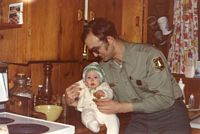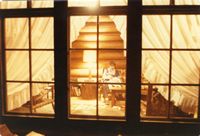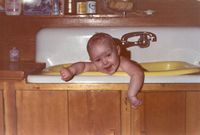Our Museum Building History

The Luby Bay Ranger Station log cabin is one of the most visible legacies of the Civilian Conservation Corps (CCC) at Priest Lake. The United States Forest Service designed this rustic cabin and oversaw its construction in 1934 and 1935. Two truckloads of young men from the Kalispell Bay CCC camp came each day to work on the cabin under the tutelage of local men like Fulton Messmore. Messmore instructed the CCC boys how to cut and notch the western larch logs, then plane and varnish them. He taught them to split cedar shakes for the roof and to turn gathered rocks into a remarkable fireplace. The finished Luby Bay cabin made with local materials was deemed by the Forest Service “one of the best pieces of work to be found anywhere.”
Since 1989 the Priest Lake Museum has opened the cabin as a museum under a special use permit issued by the Forest Service in a unique partnership to provide exhibits, programs, and publications focusing on the region’s heritage.
Luby Bay Cabin’s Rustic Architecture


This log cabin sits in the middle of the Luby Bay Summer Cottage Tract, privately owned cabins on land administered by the United State Forest Service. This Recreation Residence program began at Priest Lake in 1907 when vacationers could receive an annual permit for a waterfront lot to build a rustic cabin. While annual fees and regulations changed over the years, the obligation for permittees to make sure their cabins blended in with the environment to preserve shoreline vistas has always remained. Forest Service planners hoped the Luby Bay log cabin could serve as a model but it proved much more substantial than most vacationing families could afford during the Depression.
Guarding Priest Lake
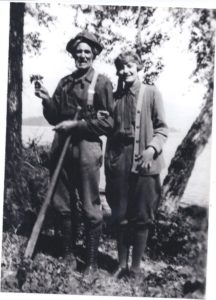
The Forest Service began using the cabin site in the 1910s as a summer guard station. It served as part of a larger network to fight forest fires at Priest Lake that also included lookouts and smoke chasers who fought the fires once they were spotted. Guards like Fred Williamson patrolled for miles along the shoreline and climbed daily up the ridge at the south end of the bay to look for signs of fire.
A Home for Forest Service Families

The Forest Service found it needed a permanent presence along the shore by 1930 as so many vacationers flocked to Priest Lake. Ranger Jim Ward took on the job and his family moved into the Luby Bay Guard Station, a houseboat pulled up on the beach. Several years later they welcomed the opportunity to move into the newly finished CCC log cabin. Helen Ward appreciated the level floors, the handsome fireplace, and running water, but she found the interior dreadfully dark even on the sunniest day. The Forest Service agreed with her and added two more windows. Forest Service families lived in the cabin year round until 1989 when it became home to the Priest Lake Museum.
Civilian Conservation Corps Legacy

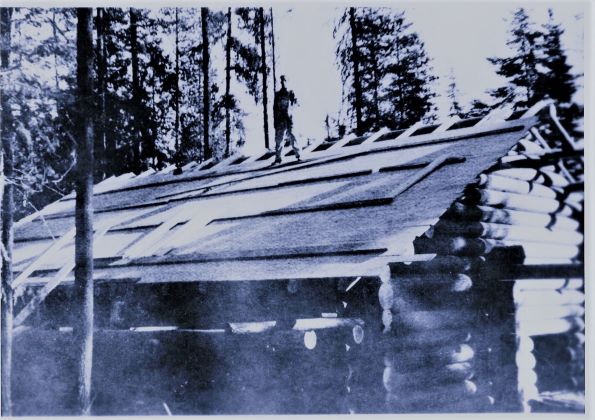
Franklin Delano Roosevelt created the CCC as part of his New Deal to fight back against the Great Depression. The first young men at Priest Lake had enlisted in cities along the East Coast but soon found themselves in the Idaho mountains charged with conservation projects in the national and state forests. Most of the 200 men stationed at the Kalispell Bay camp worked on building roads, clearing snags, planting trees in burned over areas, and fighting fires. A handful of men became specialists in recreational facilities, improving Luby Bay campground, developing the Reeder Bay, Outlet Bay and Osprey campgrounds, expanding the Beach Trail, and constructing the Luby Bay Cabin.

